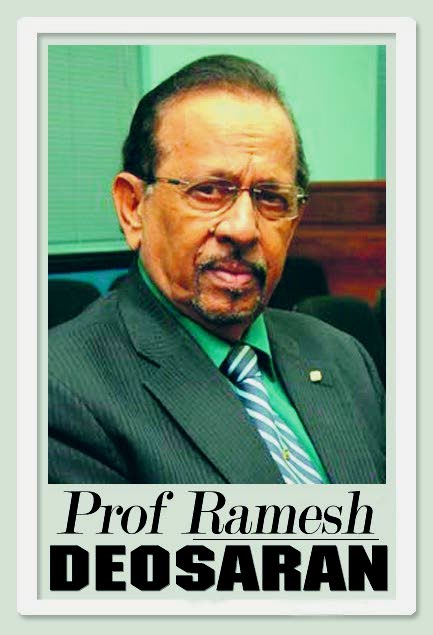Inequity, politics, race

Inequity. In education, “inequity” is described as “unfairness or bias,” calling for effective policy reforms. When such unfairness or bias become persistent, it perpetrates socio-economic inequity and subverts the promises of a democratic society and the education system itself. Our society can no longer be blinded by the persistent linkage between the troubles of many African youths as noted by Prime Minister Dr Rowley and deficiencies of the education system – starting from the SEA to university output. Complaining is one thing but developing and implementing effective reforms is quite another matter. The records will show who failed.
Given SEA disparities, then secondary school scholarships, then university entrance and achievement, politicians, parents and the population may well ask: Is our educational output equitable or inequitable? Is it unfair or biased? In what ways? One of the quick, defensive responses is that there is equality of opportunity to study and write the SEA. A meritocracy, it is said.
But suppose someone says that all primary schools are not equal in preparing students for the SEA as the annual results consistently reveal? Whose fault? Can you call this “unfair” or “biased” to the affected students? After all, in any system where there are prescribed “winners and losers,” as revealed in students’ “first choice,” inequality of achievement will exist. (The debate over grammar vs technical/vocational education is a related but separate matter). “Bias” rests on persistent disproportionality.
Four questions arise: (1) Why do so many primary schools differ in SEA passes? (I will note the welcome exceptions another time) (2) Further, if a higher proportion of high-performing students persistently come from a specific socio-economic group, parental type, ethnicity or gender and consistently enter top-performing secondary schools, then university, is this unfairness or bias? (3) Why do many secondary schools differ so, with the government-assisted secondary (denominational) schools generally out-performing government schools?
(4) Since political independence, education has been consistently proposed as the major vehicle for socio-economic mobility and personal well-being. To what extent has the education system changed the country’s social stratification system, and which socio-economic group or groups have been relatively deprived along the way? To what extent is Dr Rowley’s concern justified?
Would the answers to these questions help reveal a combined social-class ethnic bias through meritocracy in the education system? And to what extent could you weaken the strong to strengthen the weak?
Several controversial issues arise, some already known, but which may help promote the public discourse now required over the education system:
1. The education system formally relies on merit-driven competition for success. It is designed as a system of meritocracy, mainly through equality of opportunity where all can write the same examination. But does this meritocracy obscure or promote inequity?
2. This system of meritocracy gets modified for denominational run (government assisted) secondary schools to select at least twenty percent of SEA passes, presumably within a specified range of marks. It was therefore surprising to hear the ministry’s Chief Education Officer Harrilal Seecharan, saying: “We follow the Concordat. For us here, at the technical level we don’t have an option of saying 20 per cent or not, and we don’t have an option of saying you must take a child with a particular score. So, it’s basically open to the principal.” (Express, July 5).
3. This Concordat concession allows the religion to promote and preserve its faith – an arrangement, politically backed, largely resting on the constitution. The meritocracy gets further softened by other criteria, for example, where the student lives, gender, twins, etc.
4. Then, shying from government schools, there is the significant increase in high-performing, fee-paying private schools (kindergarten, primary, secondary) which helps aggravate existing socio-economic disparities.
5. The equality of opportunity for writing the SEA regularly results in a much higher proportion of top-performing middle class students going to high-performing secondary schools, mainly denominational-run (prestige) schools. Such high-prestige entry largely results from the parents and students’ first choices. That is a right that cannot be easily taken away.
4. However, there is the unshakeable principle that “treating unequals equally” inexorably produces unequal results. With equality of opportunity, all SEA candidates do not start from the same spot. In this sense, is the “opportunity” really equal? (continued next week).


Comments
"Inequity, politics, race"